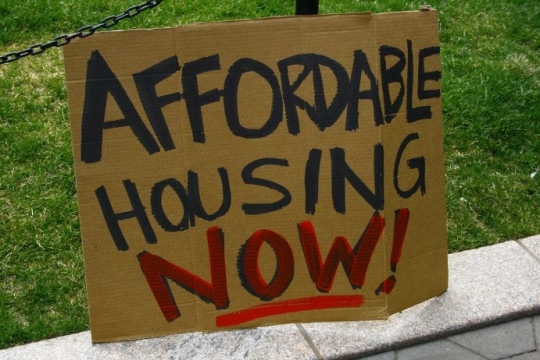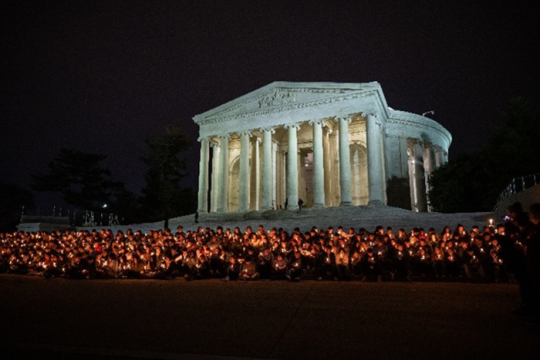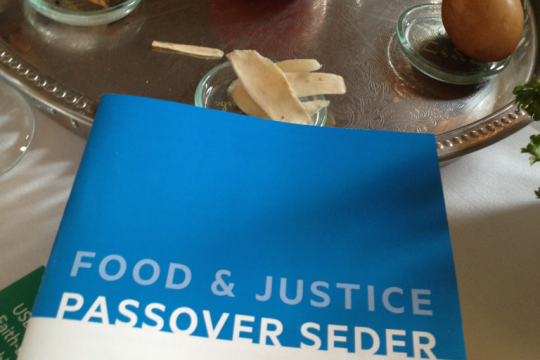When I left for college my freshman year, I was nervous about exploring a new Jewish community. However, I immediately felt at home as I walked into my university’s Hillel’s Conservative Friday night services and saw the Siddur Sim Shalom, the prayer book that I had grown up with. The siddur offered me a sense of comfort and familiarity in an otherwise completely new setting.
When I began exploring humanistic Judaism, the humanistic Shema, (Shema Yisrael Echad Ameinu, Echad Adam – hear Israel, our people is one, humanity is one) allowed me to connect my humanistic Jewish values in a familiar framework. Similarly, when I first discovered Siddur Sha'ar Zahav, “the first LGBT Prayer Book for every occasion,” it provided me with the opportunity to connect my queer identity with a nuanced prayer book that still contained elements familiar to me from my upbringing. What I’ve learned over the years is that prayer books can be sources of comfort. More importantly, however, they can be tools for change and social justice.
With that in mind, I was excited to learn of the Reform Movement’s new machzor (special siddur or prayer book for holidays), Mishkan HaNefesh. The new machzor for the High Holidays includes a number of inclusive elements, including a gender-neutral blessing for trans individuals; the use of the term couples, instead of bride and groom, to be LGBT-inclusive; and prayers affirming the divine essence in people with disabilities. The prayer book includes passages allowing for doubt, questioning and even anger, a mix of traditional and modern prayers and transliterations for all the Hebrew liturgy so people can follow along, regardless of their knowledge of Hebrew.
Hara Person, Publisher and Director of the CCAR Press and Director of Strategic Communications, explains that this new machzor was written to engage a wide, diverse audience:
“The High Holy Days are the time when we grapple with the big questions about life and death, faith and hope, forgiveness and anger, loss and new beginnings. Our hope was to create many possible doorways into the High Holy Day experience, so that people can find meaning in different ways depending on who they are and what they’re struggling with, what’s on their minds when they walk in. For some people it may be the liturgy itself, for others it may be beautiful translations, or the poetry. For some it may be the intellectual engagement with the commentary on the bottom of the pages, or they may find inspiration in a study text or meditation. And for others, the gorgeous woodblock art by Joel Shapiro may offer a point of connection and meaning. “Prayer books have the power to change attitudes. The High Holidays are usually the most well-attended services of the Jewish year. Having an inclusive prayer book, like Mishkan HaNefesh, at the service creates a space for people who are too often marginalized in religious settings: LGBT individuals, individuals with disabilities humanists and more. Updated inclusive language challenges us to reflect on our own use of language in our everyday lives and how we can work to be more inclusive in every day in our communities. Most importantly, this new machzor emphasizes a long-standing aim of the Reform Movement: fostering a Jewish community that is welcoming and inclusive of all people, regardless of their identities. Over the thousands of years of organized religion, prayer has been a key component of most faiths. The words in our prayer books, which are meant to guide our prayers, symbolize the vision we see for the world. And the vision in the Mishkan HaNefesh is a beautiful one: a world that affirms the shared humanity—the divine—in each of us.
Related Posts
Image

Why is this Right Different?: City of Grants Pass, Oregon v. Johnson and the Passover Call to Action
As families prepare for the Passover seder and its celebration of freedom, the Supreme Court will hear a case in which the basic civil rights of unhoused people are at stake.
Image

Highlights from the 2023-2024 L'Taken Season
Another incredible L'Taken season has come to a conclusion! Over the 2023-2024 season, we had over 1,300 Jewish high schoolers from across North America join us in Washington, D.C. over our four weekends.
Image

Passover 2024: The Three Central Messages of Pesach
The Exodus story is the master narrative of the Jewish people. As most of us know, it tells the story of the Hebrew slaves in Egypt and the rise of Moses as their liberator. It reminds us that in 2024, the universality of Passover's three-part message again reverberates through the generations: freedom, love, and justice.